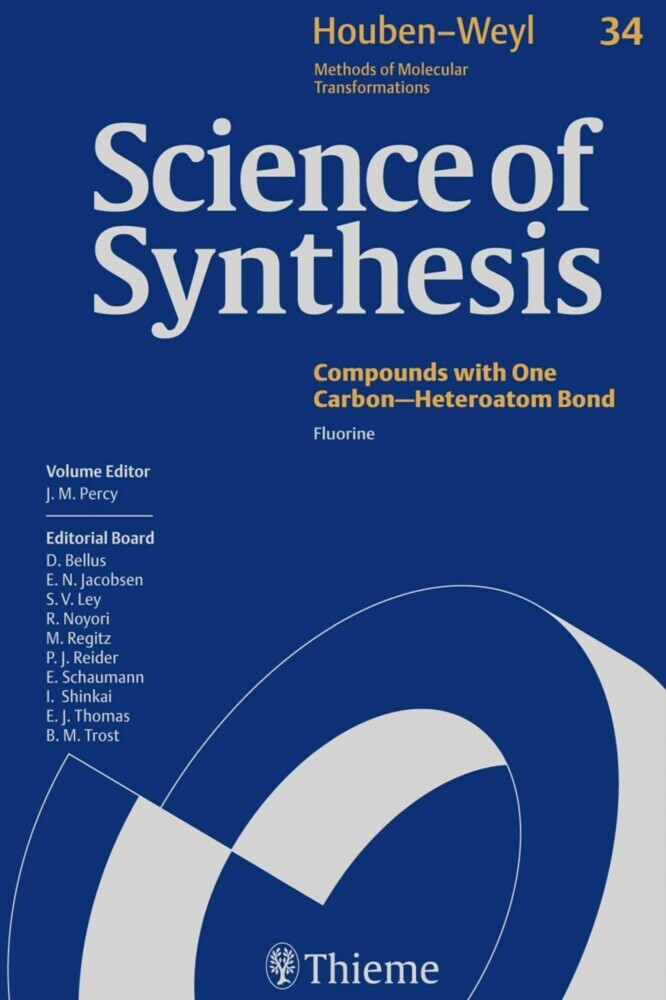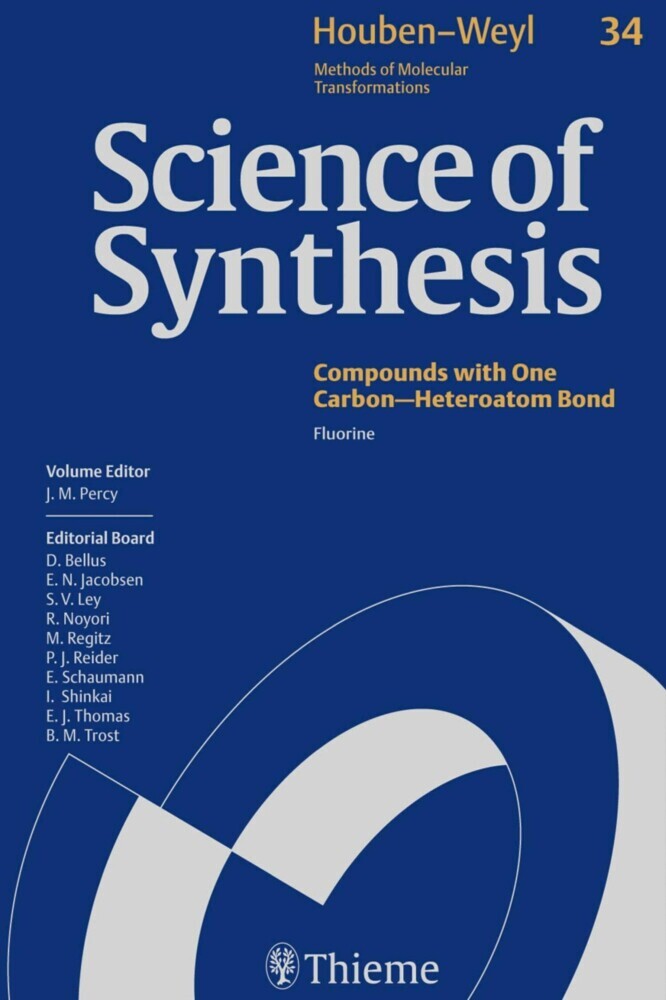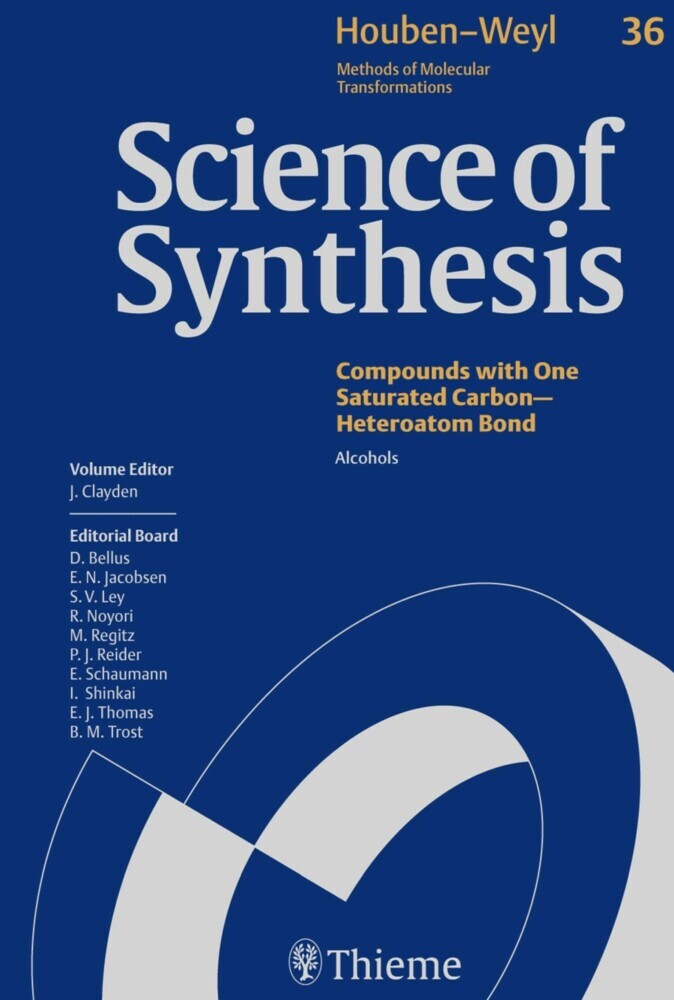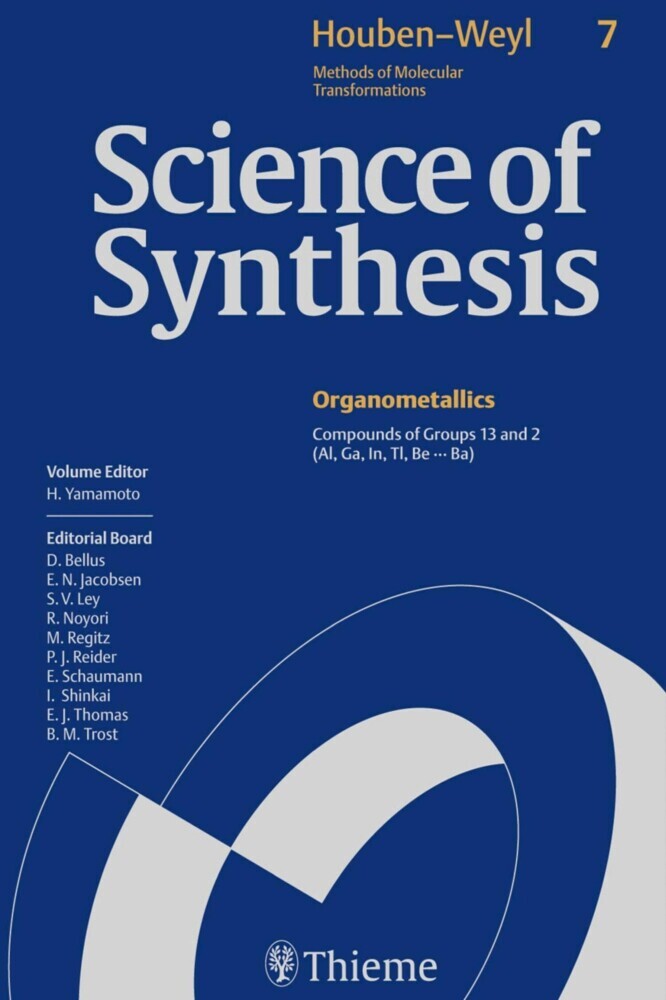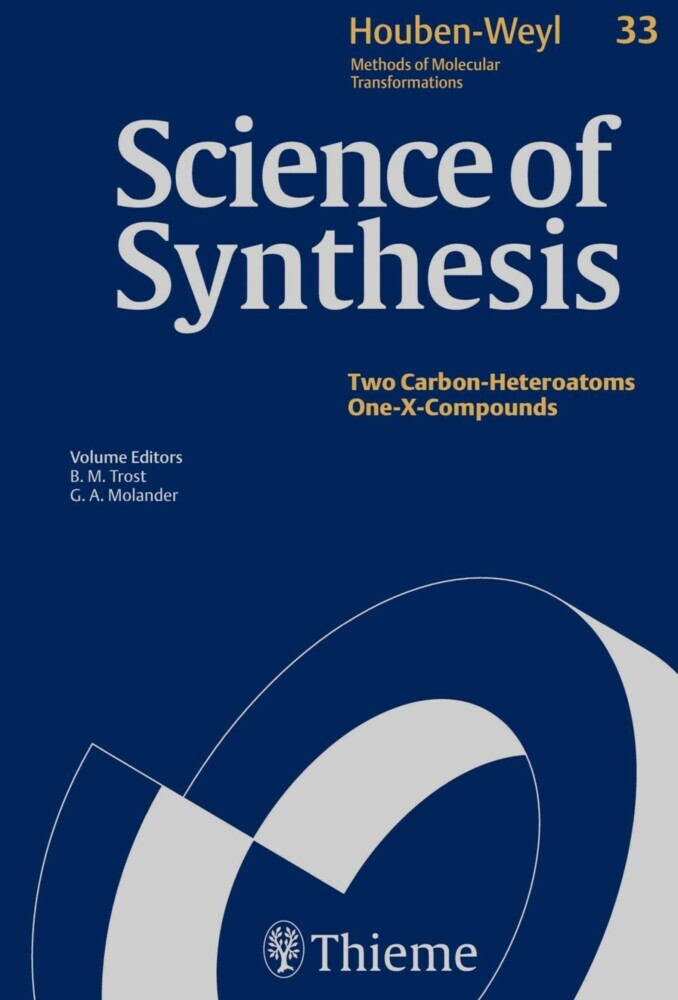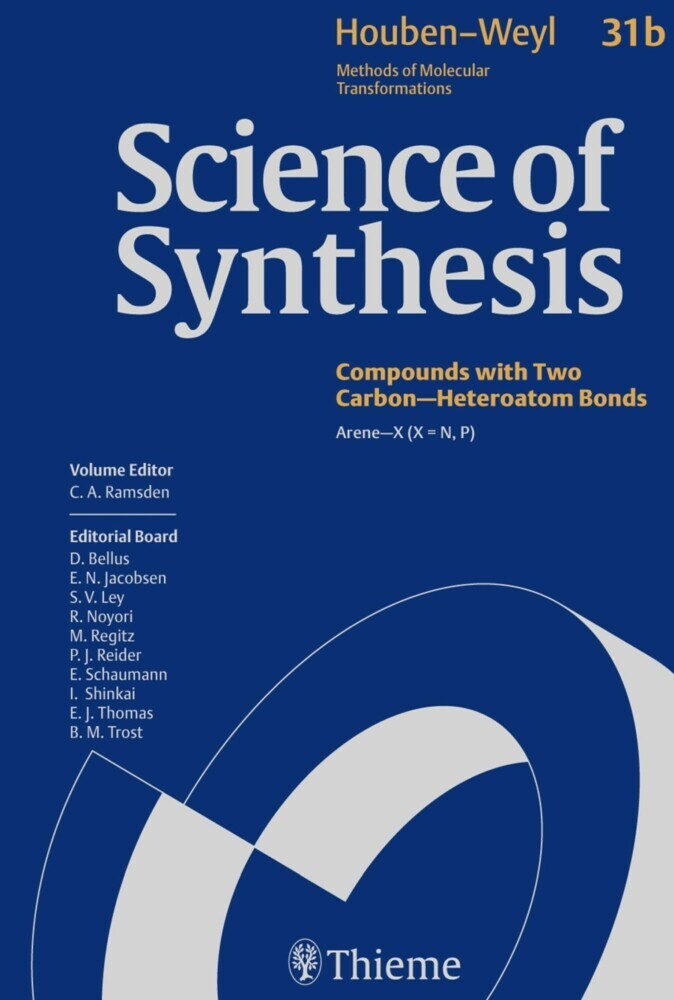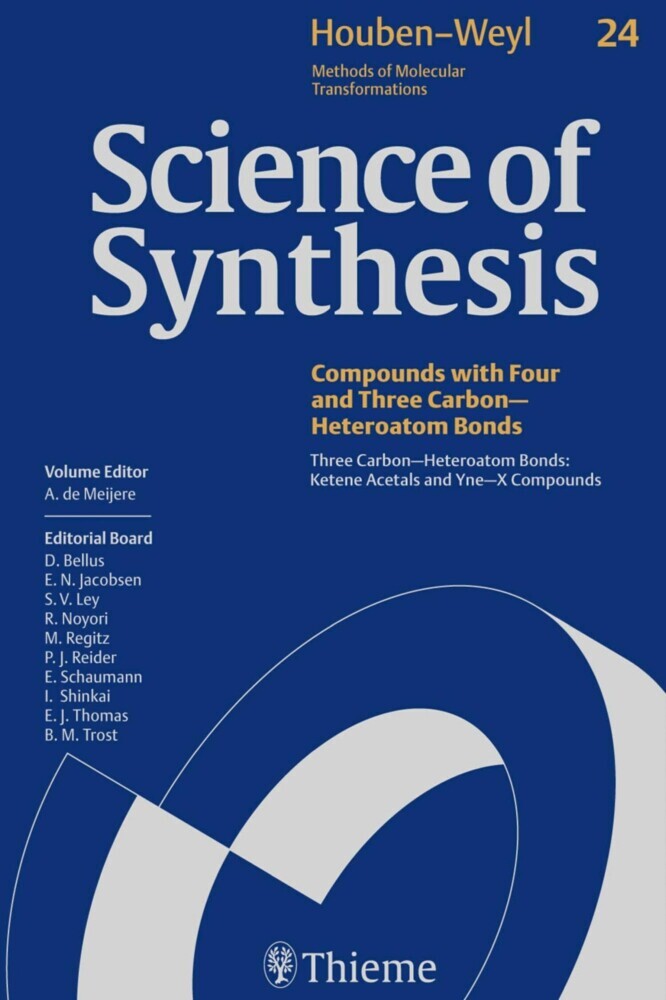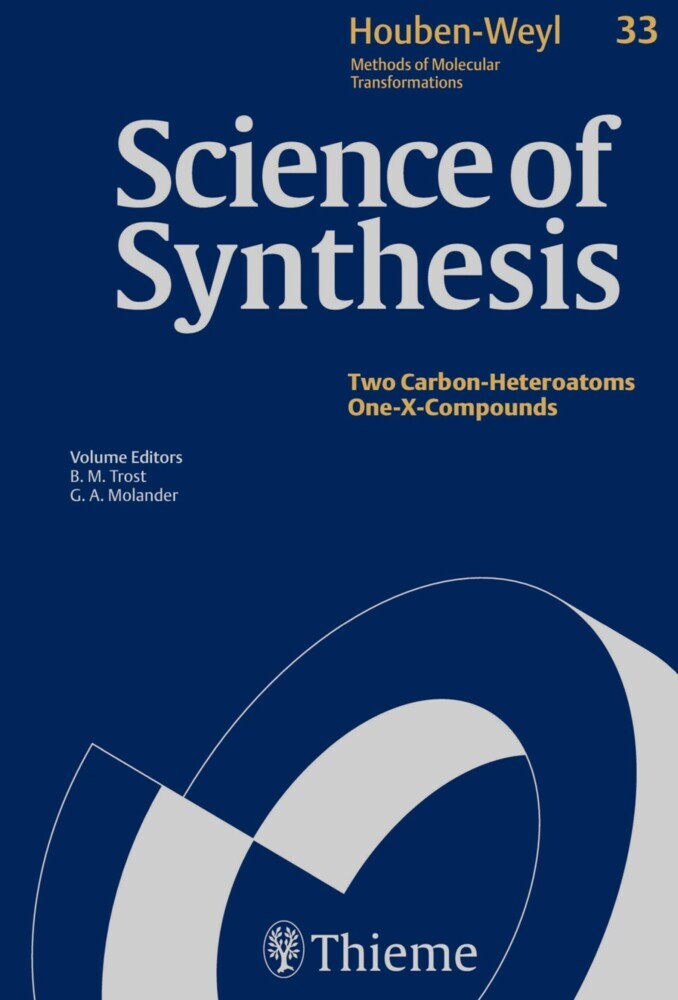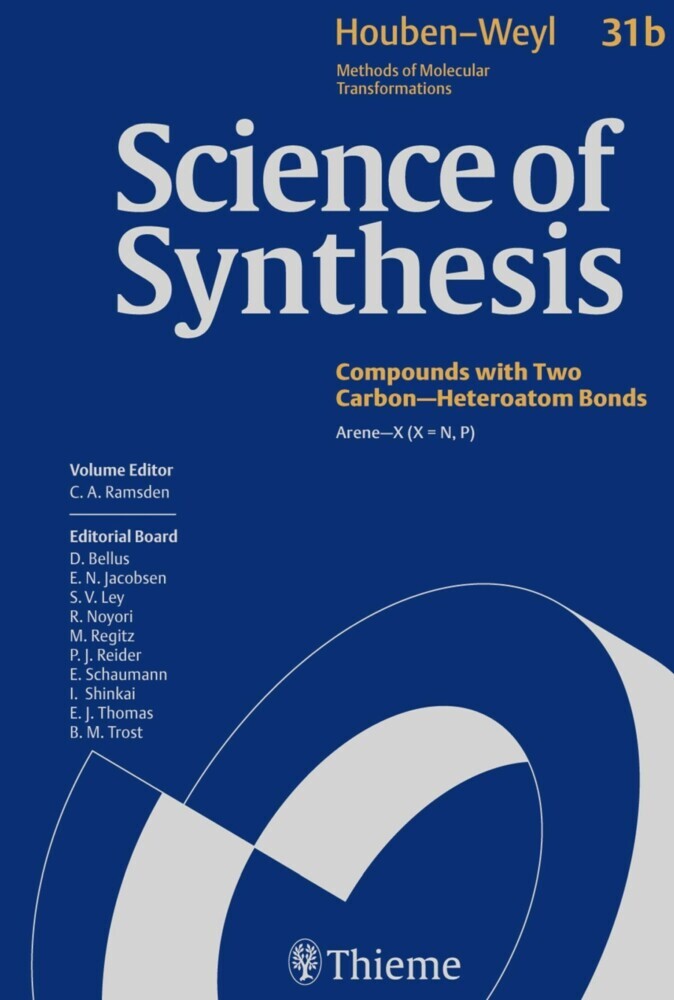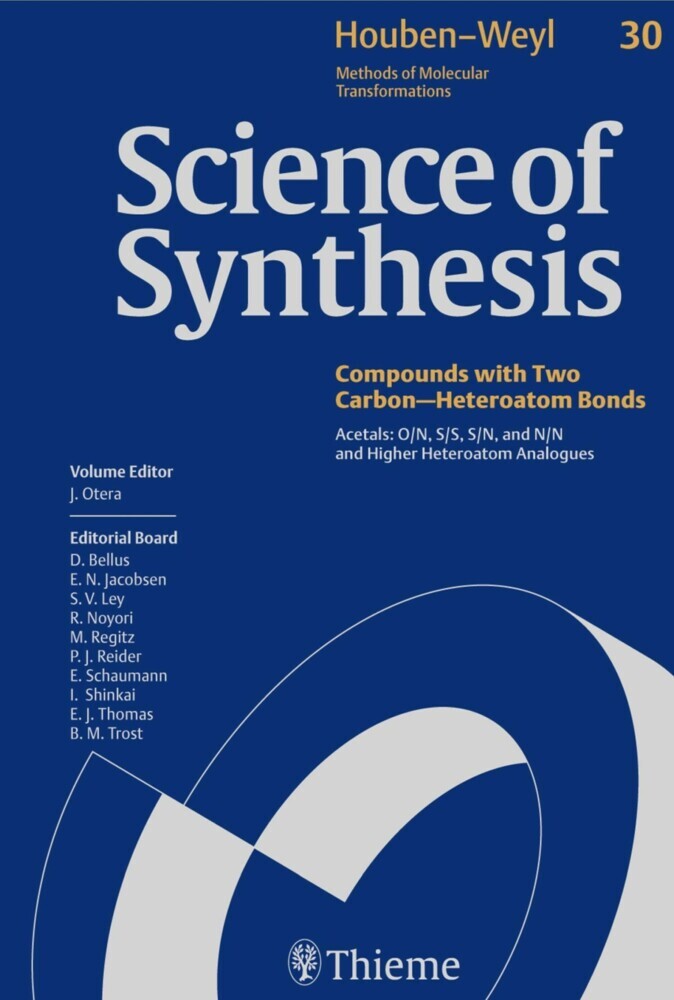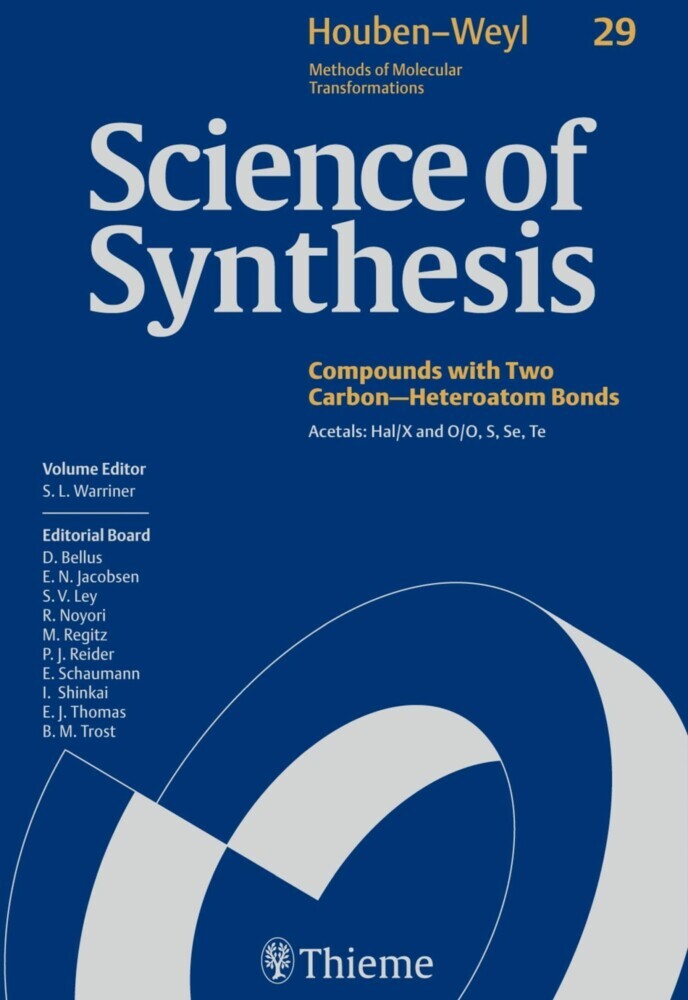Science of Synthesis: Houben-Weyl Methods of Molecular Transformations Vol. 34
Fluorine
Science of Synthesis: Houben-Weyl Methods of Molecular Transformations is the entirely new edition of the acclaimed reference series Houben-Weyl, the standard synthetic chemistry resource since 1909. This new edition is published in English and will comprise 48 volumes published between the years 2000 and 2008.
Science of Synthesis is a quality reference work developed by a highly esteemed editorial board to provide a comprehensive and critical selection of reliable organic and organometallic synthetic methods. This unique resource is designed to be the first point of reference when searching for a synthesis strategy.
- Contains the expertise of presently 400 leading chemists worldwide
- Critically evaluates the preparative applicability and significance of the synthetic methods
- Discusses relevant background information and provides detailed experimental procedures
For full information on the Science of Synthesis series, visit the Science of Synthesis Homepage.
1;Science of Synthesis - Volume 34: Fluorine;1 1.1;Title page;3 1.2;Imprint;5 1.3;Preface;6 1.4;Volume Editor's Preface;8 1.5;Overview;10 1.6;Table of Contents;12 1.7;Introduction;22 1.8;34.1 Product Class 1: Fluoroalkanes;32 1.8.1;34.1.1 Synthesis by Substitution of Hydrogen;42 1.8.1.1;34.1.1.1 Method 1: Direct Fluorination with Elemental Fluorine;42 1.8.1.2;34.1.1.2 Method 2: Reaction with Selectfluor;50 1.8.1.3;34.1.1.3 Method 3: Reaction with Xenon Difluoride;53 1.8.1.4;34.1.1.4 Method 4: Reaction with Organic Hypofluorites;54 1.8.1.5;34.1.1.5 Method 5: Reaction with Cesium Fluoroxysulfate;56 1.8.1.6;34.1.1.6 Method 6: Reaction with Hydrogen Fluoride/Pyridine and Nitrosonium Tetrafluoroborate;58 1.8.2;34.1.2 Synthesis by Substitution of Metals;60 1.8.2.1;34.1.2.1 Method 1: Synthesis from Organosilanes;61 1.8.2.2;34.1.2.2 Method 2: Synthesis from an Organothallium Compound;63 1.8.2.3;34.1.2.3 Method 3: Synthesis from Organomercury Compounds;64 1.8.2.4;34.1.2.4 Method 4: Synthesis from Organomagnesium Compounds;65 1.8.2.5;34.1.2.5 Method 5: Synthesis from Organolithium Compounds;66 1.8.2.5.1;34.1.2.5.1 Variation 1: Using Molecular Fluorine;66 1.8.2.5.2;34.1.2.5.2 Variation 2: Using Perchloryl Fluoride;67 1.8.3;34.1.3 Synthesis by Substitution of Carbon Functionalities;70 1.8.3.1;34.1.3.1 Method 1: Synthesis from Alkanecarboxylates Using Fluorine;70 1.8.3.2;34.1.3.2 Method 2: Synthesis from Alkanecarboxylic Acids;71 1.8.3.2.1;34.1.3.2.1 Variation 1: Using Titanium(IV) Oxide/Silver(I) Fluoride;71 1.8.3.2.2;34.1.3.2.2 Variation 2: Using Xenon Difluoride;72 1.8.3.2.3;34.1.3.2.3 Variation 3: Using Bromine Trifluoride;74 1.8.3.2.4;34.1.3.2.4 Variation 4: Using Triethylamine Trihydrofluoride;75 1.8.3.3;34.1.3.3 Method 3: Synthesis from Cyclopropanes;75 1.8.4;34.1.4 Synthesis by Substitution of Heteroatoms;78 1.8.4.1;34.1.4.1 Synthesis by Substitution of a Halogen;78 1.8.4.1.1;34.1.4.1.1 Method 1: Substitution of Primary Halides;78 1.8.4.1.1.1;34.1.4.1.1.1 Variation 1: Using Metal Fluorides;78 1.8.4.1.1.2;34.1.4.1.1.2 Variation 2: Using Hydrogen Fluoride Complexes;81 1.8.4.1.1.3;34.1.4.1.1.3 Variation 3: Using Tetraalkylammonium Fluorides;82 1.8.4.1.1.4;34.1.4.1.1.4 Variation 4: Using Fluorosilicate Derivatives;83 1.8.4.1.2;34.1.4.1.2 Method 2: Substitution of Secondary Halides;83 1.8.4.1.2.1;34.1.4.1.2.1 Variation 1: Using Metal Fluorides;84 1.8.4.1.2.2;34.1.4.1.2.2 Variation 2: Using Hydrogen Fluoride Complexes;86 1.8.4.1.3;34.1.4.1.3 Method 3: Substitution of Tertiary Halides;87 1.8.4.1.3.1;34.1.4.1.3.1 Variation 1: Using Metal Fluorides;87 1.8.4.1.3.2;34.1.4.1.3.2 Variation 2: Using Base--Hydrogen Fluoride Complexes;88 1.8.4.1.3.3;34.1.4.1.3.3 Variation 3: Using Silver(I) Tetrafluoroborate;88 1.8.4.1.3.4;34.1.4.1.3.4 Variation 4: Using Ruthenium Complexes;89 1.8.4.2;34.1.4.2 Synthesis by Substitution of Hydroxy Groups in Alcohols;92 1.8.4.2.1;34.1.4.2.1 Method 1: Reaction with Fluoro-.4-sulfanes;93 1.8.4.2.1.1;34.1.4.2.1.1 Variation 1: With N,N-Diethylaminosulfur Trifluoride;97 1.8.4.2.1.2;34.1.4.2.1.2 Variation 2: With N,N-Bis(2-methoxyethyl)aminosulfur Trifluoride (Deoxo-Fluor);129 1.8.4.2.1.3;34.1.4.2.1.3 Variation 3: With Morpholinosulfur Trifluoride;132 1.8.4.2.1.4;34.1.4.2.1.4 Variation 4: With N,N-Dimethylaminosulfur Trifluoride;134 1.8.4.2.1.5;34.1.4.2.1.5 Variation 5: With Other Dialkylaminofluoro-.4-sulfanes;134 1.8.4.2.1.6;34.1.4.2.1.6 Variation 6: With Sulfur Tetrafluoride;135 1.8.4.2.1.7;34.1.4.2.1.7 Variation 7: With Alkoxysulfur Trifluorides;137 1.8.4.2.2;34.1.4.2.2 Method 2: Reaction with Selenium Tetrafluoride;138 1.8.4.2.3;34.1.4.2.3 Method 3: Reaction with Fluorophosphoranes;139 1.8.4.2.3.1;34.1.4.2.3.1 Variation 1: With Difluoro(triphenyl)phosphorane;140 1.8.4.2.3.2;34.1.4.2.3.2 Variation 2: With Trifluoro(diphenyl)phosphorane;140 1.8.4.2.3.3;34.1.4.2.3.3 Variation 3: With Tetrafluoro(phenyl)phosphorane;140 1.8.4.2.4;34.1.4.2.4 Method 4: Reaction with Fluo
Bellus, Daniel
Percy, Jonathan M.
| ISBN | 9783131721112 |
|---|---|
| Artikelnummer | 9783131721112 |
| Medientyp | E-Book - PDF |
| Copyrightjahr | 2014 |
| Verlag | Georg Thieme Verlag KG |
| Umfang | 445 Seiten |
| Sprache | Englisch |
| Kopierschutz | Digitales Wasserzeichen |

